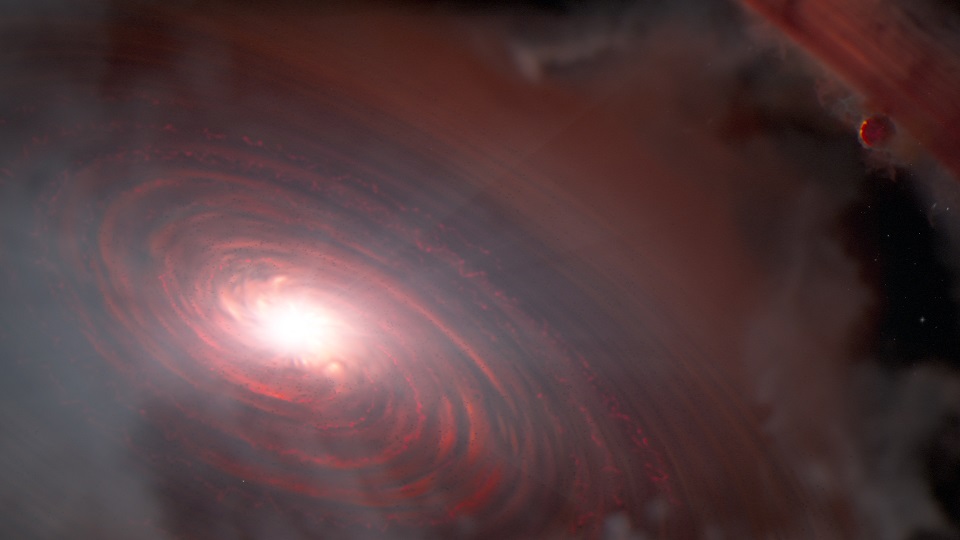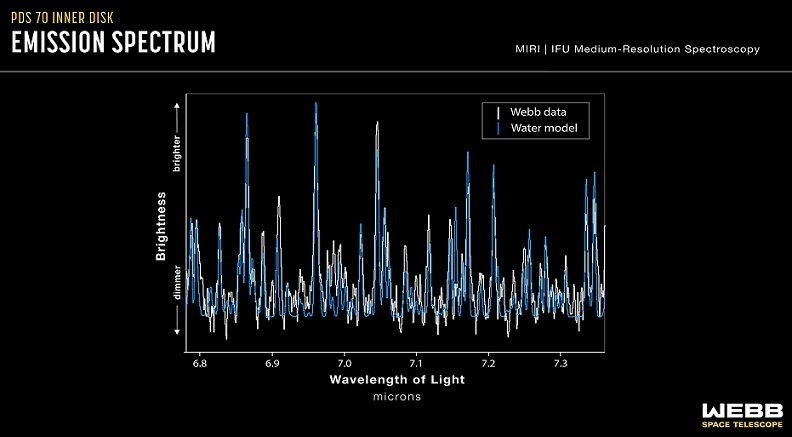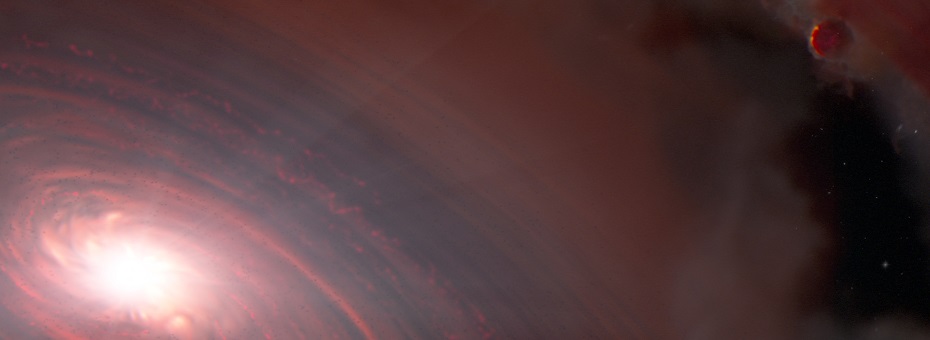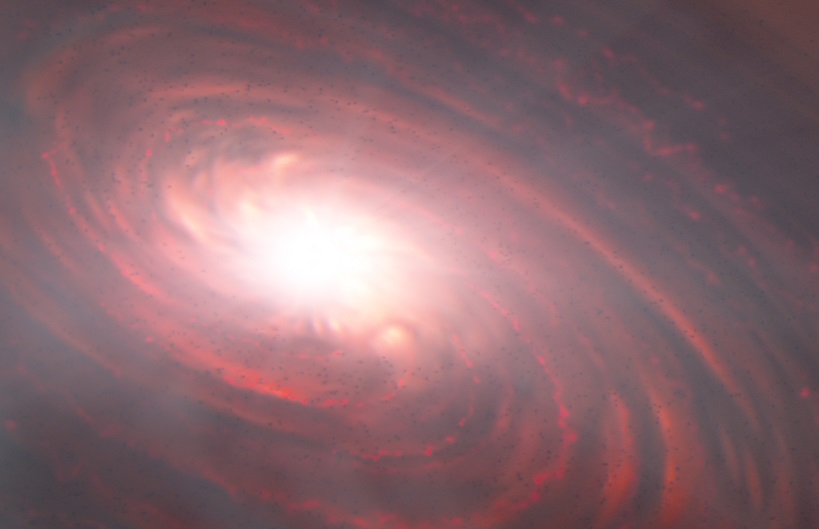New measurements by NASA’s James Webb Space Telescope have detected water vapor at distances of less than 100 million miles from the star – the regio
New measurements by NASA’s James Webb Space Telescope have detected water vapor at distances of less than 100 million miles from the star – the region where rocky, terrestrial planets may be forming.
This is the first detection of water in the terrestrial region of a disk already known to host two or more protoplanets, one of which is shown at upper right in the wide angle photo, reported NASA.

The finding shows that a water reservoir is available for terrestrial planets that might be coalescing there. Water, water, everywhere, not in drops, but as steam. This artist concept portrays the star PDS 70 and its inner protoplanetary disk.
Scientists using NASA’s James Webb Space Telescope have discovered that thirsty planets in the PDS 70 system have access to a reservoir of water.

Importantly, the water vapor was found within 100 million miles of the star, the region where terrestrial planets like Earth may be forming. (The Earth orbits 93 million miles from our Sun), reported NASA.
PDS 70 is cooler than our Sun, and is estimated to be 5.4 million years old. It is home to two known gas giant planets, at least one of which is still accreting material and growing. This is the first detection of water in the terrestrial region of a disk already known to host two or more protoplanets, reported NASA.
Water is essential for life as we know it. However, scientists debate how it reached the Earth and whether the same processes could seed rocky exoplanets orbiting distant stars.

New insights may come from the planetary system PDS 70, located 370 light-years away. The star hosts both an inner disk and outer disk of gas and dust, separated by a 5 billion-mile-wide (8 billion kilometer) gap, and within that gap are two known gas-giant planets, reported NASA.
New measurements by NASA’s James Webb Space Telescope’s MIRI (Mid-Infrared Instrument) have detected water vapor in the system’s inner disk, at distances of less than 100 million miles (160 million kilometers) from the star – the region where rocky, terrestrial planets may be forming, reported NASA.
“We’ve seen water in other disks, but not so close in and in a system where planets are currently assembling. We couldn’t make this type of measurement before Webb,” said lead author Giulia Perotti of the Max Planck Institute for Astronomy (MPIA) in Heidelberg, Germany.

“This discovery is extremely exciting, as it probes the region where rocky planets similar to Earth typically form,” added MPIA director Thomas Henning, a co-author on the paper. Henning is co-principal investigator of Webb’s MIRI (Mid-Infrared Instrument), which made the detection, and the principal investigator of the MINDS (MIRI Mid-Infrared Disk Survey) program that took the data.
PDS 70 is a K-type star, cooler than our Sun, and is estimated to be 5.4 million years old. This is relatively old in terms of stars with planet-forming disks, which made the discovery of water vapor surprising, reported NASA.
Over time, the gas and dust content of planet-forming disks declines. Either the central star’s radiation and winds blow out such material, or the dust grows into larger objects that eventually form planets.

As previous studies failed to detect water in the central regions of similarly aged disks, astronomers suspected it might not survive the harsh stellar radiation, leading to a dry environment for the formation of any rocky planets, reported NASA.
The discovery raises the question of where the water came from. The MINDS team considered two different scenarios to explain their finding.
One possibility is that water molecules are forming in place, where we detect them, as hydrogen and oxygen atoms combine. A second possibility is that ice-coated dust particles are being transported from the cool outer disk to the hot inner disk, where the water ice sublimates and turns into vapor. Such a transport system would be surprising, since the dust would have to cross the large gap carved out by the two giant planets, reported NASA.
Another question raised by the discovery is how water could survive so close to the star, when the star’s ultraviolet light should break apart any water molecules. Most likely, surrounding material such as dust and other water molecules serves as a protective shield. As a result, the water detected in the inner disk of PDS 70 could survive destruction.
Ultimately, the team will use two more of Webb’s instruments, NIRCam (Near-Infrared Camera) and NIRSpec (Near-Infrared Spectrograph) to study the PDS 70 system in an effort to glean an even greater understanding.
All Credit: NASA, ESA, CSA, Joseph Olmsted (STScI).
Christine Pulliam, Space Telescope Science Institute, Baltimore, Maryland. Markus Nielbock, Max Planck Institute for Astronomy, Heidelberg, Germany


